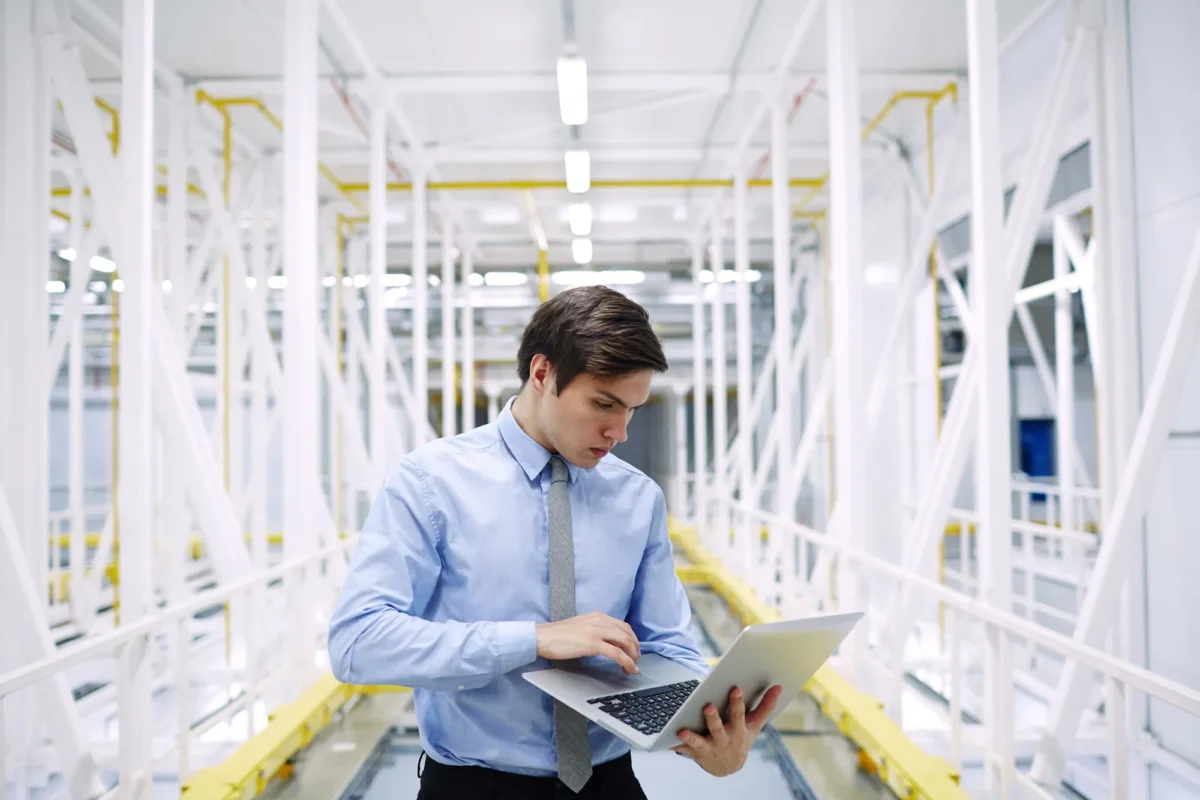
For design, planning, and construction, the focus is on going green, with the market for sustainable buildings set to grow to 1312.12 billion by 2030. Architects design structures that blend into the environment. Planners look for materials from renewable sources, and construction teams worry about their carbon footprint. But what about facility managers? How can they “keep the green going” once the building is operational and maintained?
By leveraging building information modeling for facility management (BIM for FM), they can make the most of existing sustainable elements while introducing new ones.
Working definition of BIM for FM
BIM for FM is the process of adapting existing investments in data from the design, planning, and construction phases for operations and maintenance. Instead of the facility manager starting from zero when the facility opens, they already have access to comprehensive data on all the assets and equipment inside their enterprise asset management (EAM) solution.
From there, they can run daily operations, including setting up and scheduling their maintenance programs.
Solid understanding of sustainability
According to the Global Design Research Center, a sustainable facility can “conserve energy, resources, and recycling materials and reduce the amounts of hazardous substances to which human and other organisms are exposed.”
Here, sustainability means being careful about what goes into a building and what comes out. In terms of inputs, you want to make sure you’re using the smallest amounts possible of both renewable and non-renewable resources like power and water. All systems are efficient, and where possible, they include internal recycling.
For example, you can add aerators to all your faucets and then redirect office breakroom grey water to landscaping. For outputs, a sustainable facility has, for example, comprehensive recycling programs and filters to scrub any emissions.
Why is sustainability for facilities important? According to the World Economic Forum, buildings consume 40% of global energy and produce 33% of greenhouse gas emissions. Green facilities are the cornerstone of a sustainable future.
Use cases for BIM for FM and sustainability
There’s a built-in connection between BIM for FM and sustainability. With both, you’re making investments upfront so you can run more efficiently later. With BIM for FM, you take the data from earlier life cycle stages to reduce waste and cut costs in operations and maintenance. With sustainability, you might install solar panels now for smaller electric bills later.
Using BIM for sustainability should involve a multi-prong approach. The more places you can find to employ the strategy, the better.
Cut energy costs with BIM for FM
There’s a lot you can do with BIM during design to lower the electricity bill. For example, you can look at building orientation and envelope leakage to find where you could be using less energy. You can also model different ways to use sunlight to lower your dependence on lighting without increasing solar heat gain. Done right, the facility manager doesn’t have to run the lights or the AC as often.
But that’s all before the operations and maintenance phases. With BIM for FM, you can find even more ways to use less energy. The BIM data you’ve adapted to use in your facility management software solution includes a complete asset register, a list of all the assets and equipment in the facility with all their maintenance and repair histories, schematics, and OEM manuals.
Once you know which assets are the most “power hungry,” you can set up targeted preventive maintenance schedules to ensure everything is running as efficiently as possible.
You can also use this data to start thinking about your older assets and equipment. Even if they’re still reliable, there might be more energy-efficient options available. For example, you might be able to find better options for everything from breakroom appliances to HVAC systems.
Reduce, reuse, and recycle even more
Can you recycle pizza boxes? Coffee pods? The plastic in your printer toner cartridges?
One of the big challenges with recycling programs is knowing what to include. With BIM for FM, you have comprehensive lists of what’s in the facility, from the types of fluorescent tubes to the sizes of the batteries in the emergency flashlights, making it much easier to find all the products you should be directing away from the landfill.
It also helps you find places where you should be changing vendors or products. If you’re running lights that you can’t recycle, you can quickly see the costs connected to switching to a more environmentally friendly option.
Choose better ways to renovate and replace
By choosing materials more carefully, you can reduce waste. Early in the process, you can use BIM data to ensure your construction materials are coming from renewable sources. Need to check where the lumber is sourced? All that information is inside the building model.
At the construction phase, BIM delivers clash detection much earlier and more reliably than old manual methods, so you don’t have to worry about getting halfway through framing a wall before you realize it’s in the wrong spot in the plans.
Clash detection is also available later in the life cycle when you need to renovate, repurpose, or add an extension to the existing facility. For example, the designs for the new breakroom might call for moving the sink to the other side of the room. If you know that the wall is full of air ducts before you start the demos, you can save a lot of construction materials.
Leveraging BIM for FM: a success story
Nanyang Technological University (NTU) in Singapore, renowned for its sprawling 200-hectare garden campus and the largest on-campus residence infrastructure in the country, needed to overhaul its facilities management. The university grappled with outdated manual processes, inefficiencies in report processing and room inventory management, and the cumbersome task of tracking and monitoring leasing space chargebacks both internally and externally. The university needed better ways to manage its extensive portfolio of grounds, residential halls, and academic buildings more effectively.
To tackle these issues, NTU adopted Building Information Modeling (BIM) technology integrated with Eptura’s Archibus solutions. The strategic implementation included the integration of NTU’s BIM models with facility management data, enabling precise 2D and 3D visualizations of properties for enhanced space management.
The university has seen a marked increase in the automation of facility management processes and enhanced efficiency across the board. Through automated real-time analysis, NTU has optimized space and asset utilization, leading to increased productivity and user satisfaction. The implementation, completed in just four months, now allows users to access detailed 2D and 3D views of room or floor configurations and even entire exterior building representations. NTU is now not only achieving its immediate operational goals but is also planning to expand its BIM model to incorporate asset management and building operations soon.
Get the most for the least with preventive maintenance
We often only think about the financial costs of downtime, but there are environmental costs, too. Need to replace a part because a poorly maintained asset broke? Someone had to manufacture and ship it, using water, power, and non-renewable resources at every step.
The fewer parts you need, the better it is for the environment. Avoiding breakdowns is only part of it. When you properly maintain your assets and equipment, they use fewer resources overall.
BIM for FM for the environment
BIM for FM empowers facility managers to leverage comprehensive data from the design and construction phases, enabling efficient maintenance programs and informed decision-making. Now they can reduce energy costs by targeting power-hungry assets but also enhance recycling programs and promote the use of renewable materials. And by embracing preventive maintenance programs backed by BIM, facility managers can minimize environmental impacts and ensure that buildings continue to operate efficiently and sustainably, keeping the green momentum going and contributing to a more sustainable future for our built environment.








